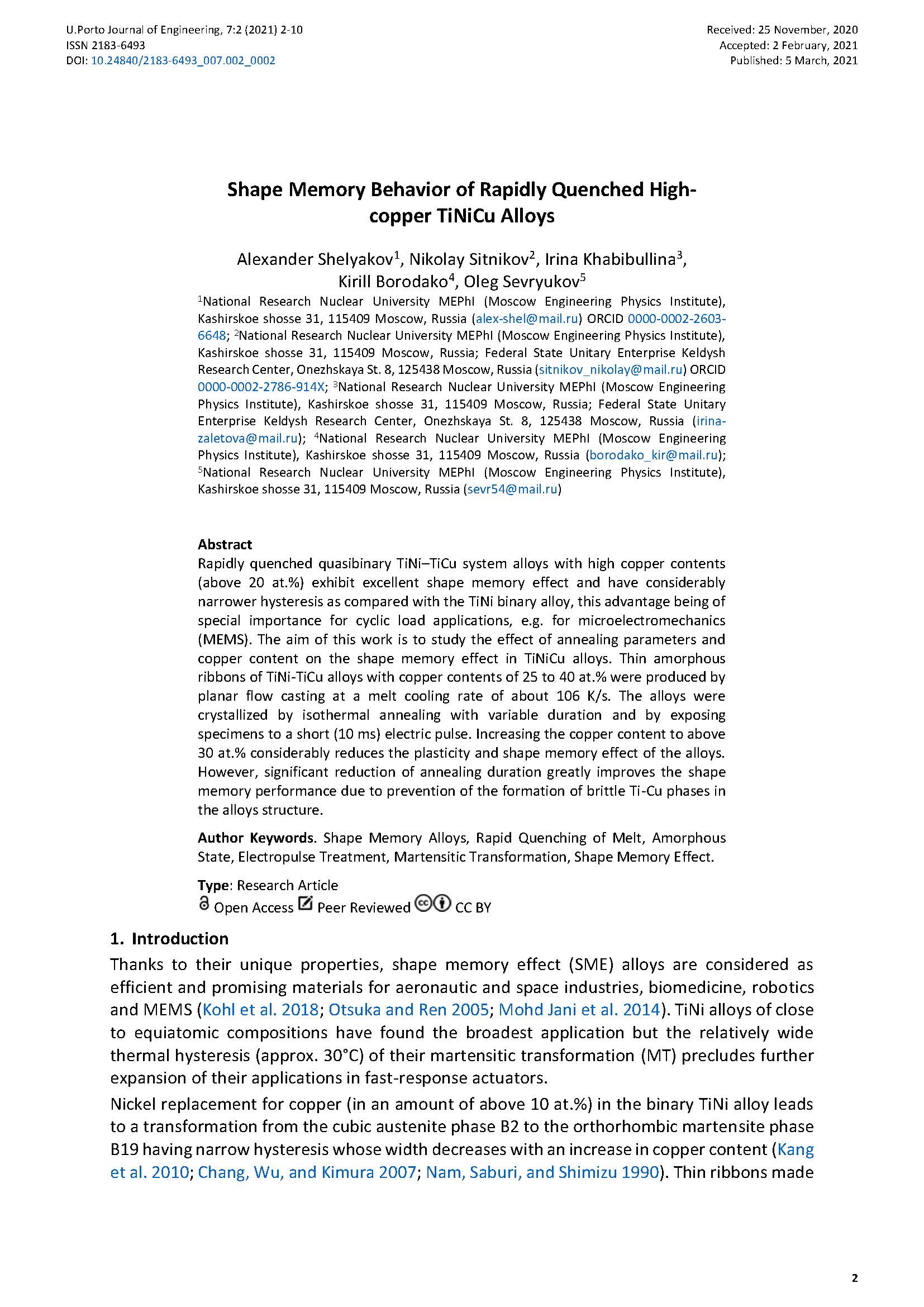Shape Memory Behavior of Rapidly Quenched High-copper TiNiCu Alloys
Main Article Content
Abstract
Rapidly quenched quasibinary TiNi–TiCu system alloys with high copper contents (above 20 at.%) exhibit excellent shape memory effect and have considerably narrower hysteresis as compared with the TiNi binary alloy, this advantage being of special importance for cyclic load applications, e.g. for microelectromechanics (MEMS). The aim of this work is to study the effect of annealing parameters and copper content on the shape memory effect in TiNiCu alloys. Thin amorphous ribbons of TiNi-TiCu alloys with copper contents of 25 to 40 at.% were produced by planar flow casting at a melt cooling rate of about 106 K/s. The alloys were crystallized by isothermal annealing with variable duration and by exposing specimens to a short (10 ms) electric pulse. Increasing the copper content to above 30 at.% considerably reduces the plasticity and shape memory effect of the alloys. However, significant reduction of annealing duration greatly improves the shape memory performance due to prevention of the formation of brittle Ti-Cu phases in the alloys structure.
Downloads
Article Details

This work is licensed under a Creative Commons Attribution 4.0 International License.
Authors who publish with this journal agree to the following terms:
- Authors retain copyright and grant the journal right of first publication with the work simultaneously licensed under a Creative Commons Attribution License that allows others to share the work with an acknowledgement of the work's authorship and initial publication in this journal.
- Authors grant the journal the rights to provide the article in all forms and media so the article can be used on the latest technology even after publication and ensure its long-term preservation.
- Authors are able to enter into separate, additional contractual arrangements for the non-exclusive distribution of the journal's published version of the work (e.g., post it to an institutional repository or publish it in a book), with an acknowledgement of its initial publication in this journal.
- Authors are permitted and encouraged to post their work online (e.g., in institutional repositories or on their website) prior to and during the submission process, as it can lead to productive exchanges, as well as earlier and greater citation of published work (See The Effect of Open Access).

